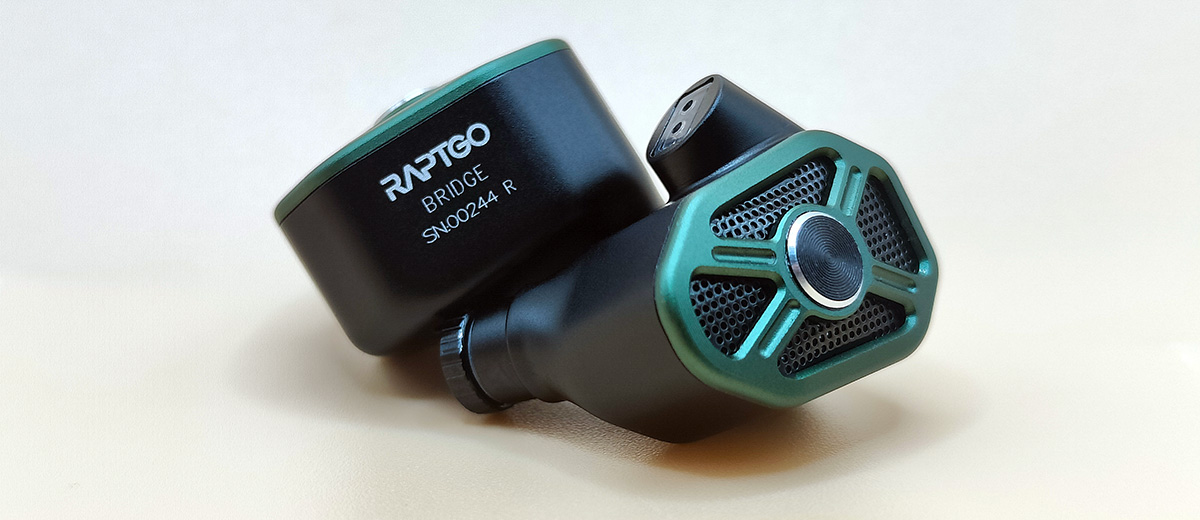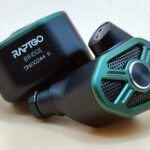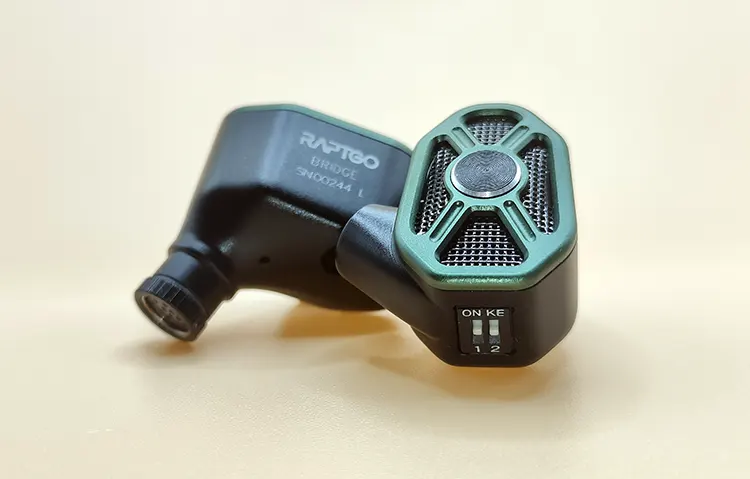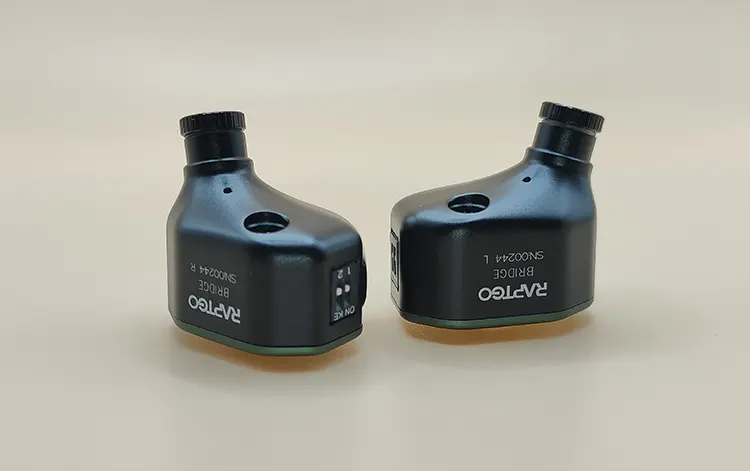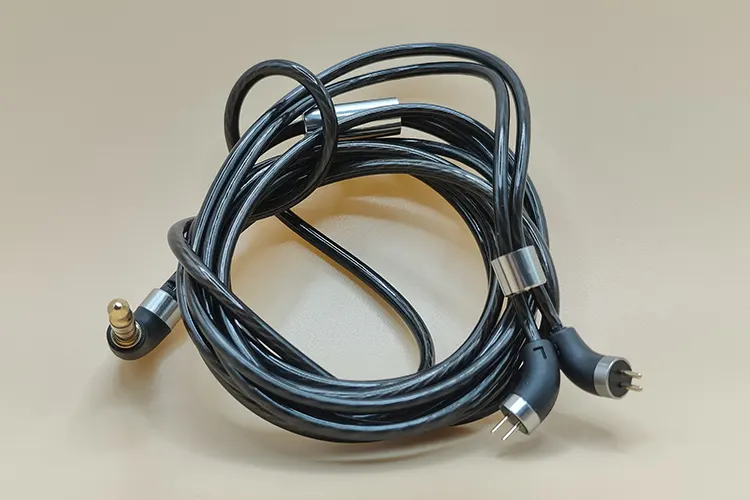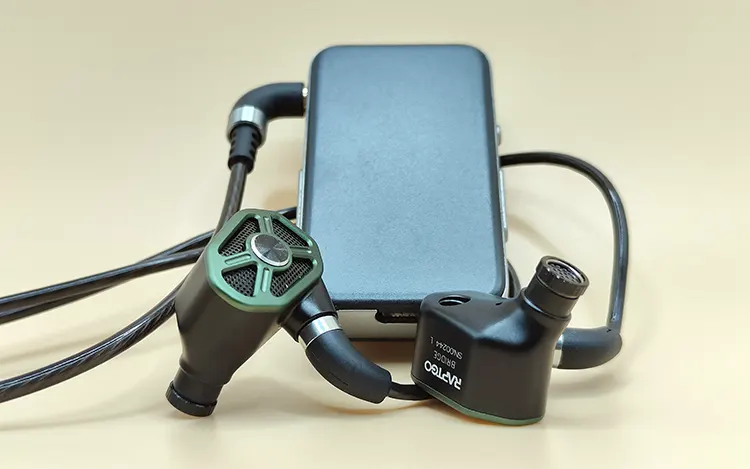In this feature, we review the RAPTGO Bridge, which is a new universal IEM with a tribrid mix of dynamic, BA, and piezoelectric drivers. It is priced at $159 SRP.
Disclaimer: This sample was sent to us in exchange for our honest opinion. Headfonics is an independent website with no affiliate links or status. We thank Linsoul for this opportunity.
Click here to read more about Linsoul gear that we have previously covered on Headfonics.
Note, that this article follows our latest scoring guidelines which you can read here.
After the success of their impressive Raptgo Hook-X in 2022, and the recent Leaf D01 release last year, RAPTGO has returned with the new Raptgo Bridge hybrid multi-driver universal IEM, and like the Leaf, it is being pitched at an affordable price point.
At $159 the Bridge sits in between the Leaf and the flagship Hook-X but it’s clearly taken inspiration from the headline act with yet another head-turning driver configuration.
Can Raptgo convince us again to part with our hard-earned cash?
Tech Highlights
The Raptgo Bridge is a universal IEM with a unique 2 BA, a 10mm 2 DD, and a 10mm double-sided 12-layer PZT driver configuration.
They’re using the two dynamic drivers for bass, the two balanced armatures for the mids and treble, and the piezoelectric driver for the soundstage and air.
Aside from those drivers, it also uses a 6mm air-conduction dynamic coil to give the drivers better coherence with each other. The dynamic driver and balanced armatures are custom-made drivers by Raptgo themselves.
For their PZT driver, they’re using their proprietary SSCE technology. That means each IEM has 5 drivers plus a 6mm air-conduction dynamic coil that’s pieced together with a four-way crossover.
Aside from that, the Raptgo Bridge has tuning switches and tuning filters as well. It’s a very customizable IEM.
The tuning filters and switches will either lower or increase the bass or treble. The mids are seemingly left the same throughout.
Design
I’m not sugarcoating it but the Raptgo Bridge looks refined, polished, and beautiful. It has excellent build quality made of metal and plastic. These are semi-open back on the design as well. This makes it great for longer usage since this alleviates built-up pressure.
The Raptgo Bridge is available in blue, green, and purple colors with either 3.5mm or 4.4mm terminations. Its form factor is great for all ear sizes as well. Its shell design is something like a rectangular pentagon. It’s tough and sturdy, which should assure you of its durability.
Aesthetics-wise, it has a great style of simplicity to it. There’s enough to look at and understand without overwhelming you. The nozzle is long enough to give you a deep fit with any tip. It also has a lip to hold your tips, preventing it from slipping.
Comfort & Isolation
The comfort of the Raptgo Bridge is good. The rectangular shape of it makes it a great fit for all ear sizes.
It covers the necessary areas so it doesn’t fall from your ears while making it feel non-intrusive. The Raptgo Bridge is also great for people who sleep wearing IEMs.
Sleeping with the Raptgo Bridge is comfortable. As someone who sleeps on their side, this goes deep within my ears and feels like it’s a part of it.
For the isolation of the Raptgo Bridge, it’s bordering between bad and average. The main reason for this is due to its semi-open back design.
Other people in the room will hear the music you’re playing in a slightly quiet room with the Raptgo Bridge. During commutes, it doesn’t block any noise too which makes it bad for passive noise cancellation purposes.
Tips
The Raptgo Bridge comes with great silicone tips. Its tips are available in either blue or white colors.
It uses high-quality silicone in the creation of it. These tips are something you’d purchase as an upgrade to your stock tips; it’s that good. They’re sufficiently grippy without being sticky. It helps prevent any slippage of the Raptgo Bridge.
Stock Cable
This is a regular 2-core copper cable without too much in the way of eye candy. Despite it being plain-looking, it does its job well enough.
There are no fancy braids or prints on it, unlike the Raptgo Bridge. It’s a bit disappointing seeing a cable of this quality when the packaging and the IEM look extra premium.
Aside from the sad design, it’s a good no-nonsense cable that doesn’t make noise or rub on anything. Daily usage using this cable will be good.
Packaging & Accessories
The Raptgo Bridge has excellent packaging. From the beautiful sheen-black box to the great IEM design, this has the word premium plastered on it from head to toe.
Opening the box, you get greeted by a solid and thick plastic case that houses all the accessories. The IEMs, the cable, the tips, the extra filters, and also a poking tool surprisingly.
Yes, the Raptgo Bridge has different filters depending on the sound you would like to hear. This is also joined with tuning switches to change the sound even more.
Unfortunately, the case isn’t suitable to be a carrying case. It’s too large and solid to put in your pocket, but putting it in your bag will do just fine.
Sound Impressions
Bass
This isn’t the star of the show for the Bridge. Despite using two 10mm dynamic drivers, the bass isn’t plentiful.
There’s a lot of depth with the bass of the Bridge. The rumble of it is excellent and can be felt throughout the music, but the slam and punch just aren’t there.
Despite having its own air-conduction dynamic coil, the slam and punch are weak to the point I can’t feel it. Meanwhile, the rumble is impressive since it reaches far throughout the music’s mids and treble.
Due to that unimpressive slam and punch, listening to bassy music is underwhelming. You don’t get that head-slamming experience, rather you get controlled rumbling bass instead.
But it makes a comeback by the fact that the bass covers wider parts of the music. There are little tinges of rumbling to accompany the treble which balances the strong detail retrieval of it.
Overall, the bass of the Raptgo Bridge ends up being a supporting role to other parts of it. The mids don’t sound dry due to the deep-reaching bass just below, while it helps tame the treble quite a bit as well.
Mids
The mids of the Raptgo Bridge is very reliant on the source you’re using. Changing the source, I use for the Bridge drastically changes how its mids sound.
Using my Radsone ES100 and CX31993 dongle makes the mids anemic and nasally. Using either the Colorfly CDA-M1P or CDA-M2 makes the mids and timbre sound correct.
I couldn’t believe how picky the Bridge was towards its source until I tried it with different pairings such as the Colorfly CDA-M2. I believe this is the ideal sound that Raptgo is aiming for.
The midrange of the Bridge is very airy and natural. Both male and female vocals sound natural but can sound slightly nasally. The vocals are recessed here since it’s a derivative of a V-shape tuning. Despite it being recessed, it’s still the star of the show.
The mids can sound like it has too much air though. It creates a fake sharpening effect that only planar IEMs normally have. With how the vocals are done, it is borderline shouty as well. It sounds analytical due to that aspect, so all the microdetails and nuances from the vocals can be heard.
Treble
Now, the Raptgo Bridge’s treble is the heart of the entire set. The level of detail retrieval is simply excellent with it. But with that great detail retrieval comes the problem of sibilance. Yes, sibilance is present here, especially with ‘s’ sounds.
The sibilance isn’t that strong but it can be heard nearly throughout every track I’ve listened to. This isn’t an issue for me, but for others, they should take note of it.
Despite the detail retrieval, the cymbals, high hats, and percussion are unnatural here. Those aspects sound weirdly dead in the Raptgo Bridge.
It’s lifeless and doesn’t sound like it should be. This might be due to the PZT implementation, unfortunately. Instead of sounding like it’s being hit by a drumstick, it’s more like it’s being slapped with a plastic fork. This is one of the bad things about the treble of the Bridge.
Staging & Dynamics
Now this is the godfather of the Raptgo Bridge. The soundstage and imaging are simply superb. Due to its semi-open wide design, the soundstage has a wide soundstage. It does have a wide soundstage but it’s not tall at all.
If the width of the soundstage goes up to level 7, the height of it goes up to level 2 only. This is impressive since it’s coming from an IEM that’s not even a planar or one that uses an EST.
Imaging is accurate as well. The vocals are dead center while the instruments are going around you depending on the mixing of the track.
For dynamics, it’s average in performance. There are times when the separation isn’t clean, but most of the time it is.
The separation isn’t the cleanest when there’s a lot of things happening with the music. Aside from that, the soundstage and imaging are the strongest reason that makes the Bridge a compelling buy.
Click on page 2 below for our recommended pairings and selected comparisons.

